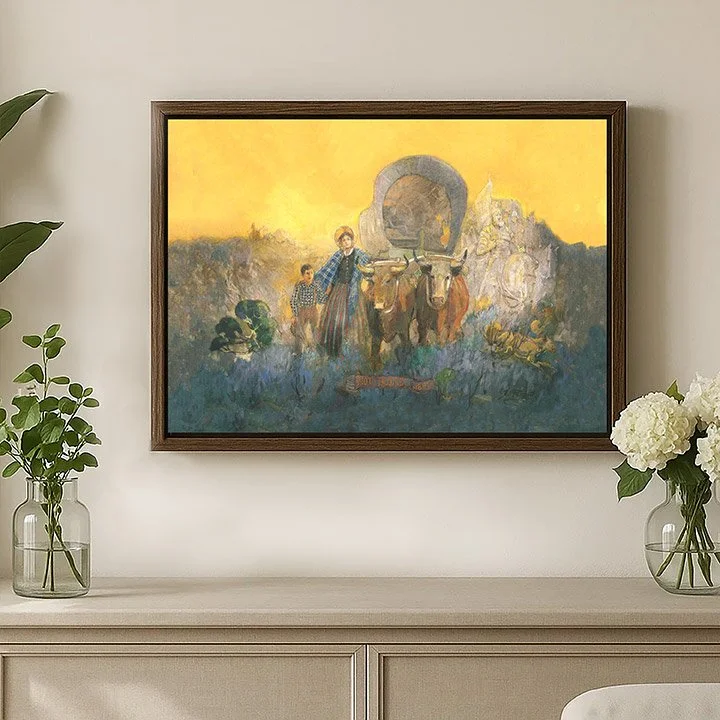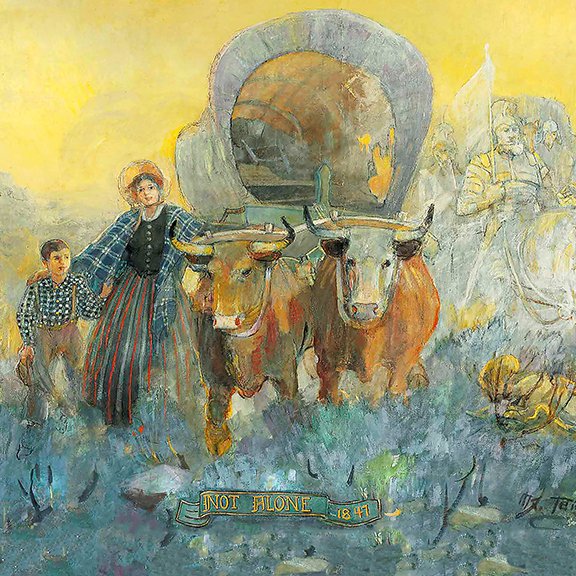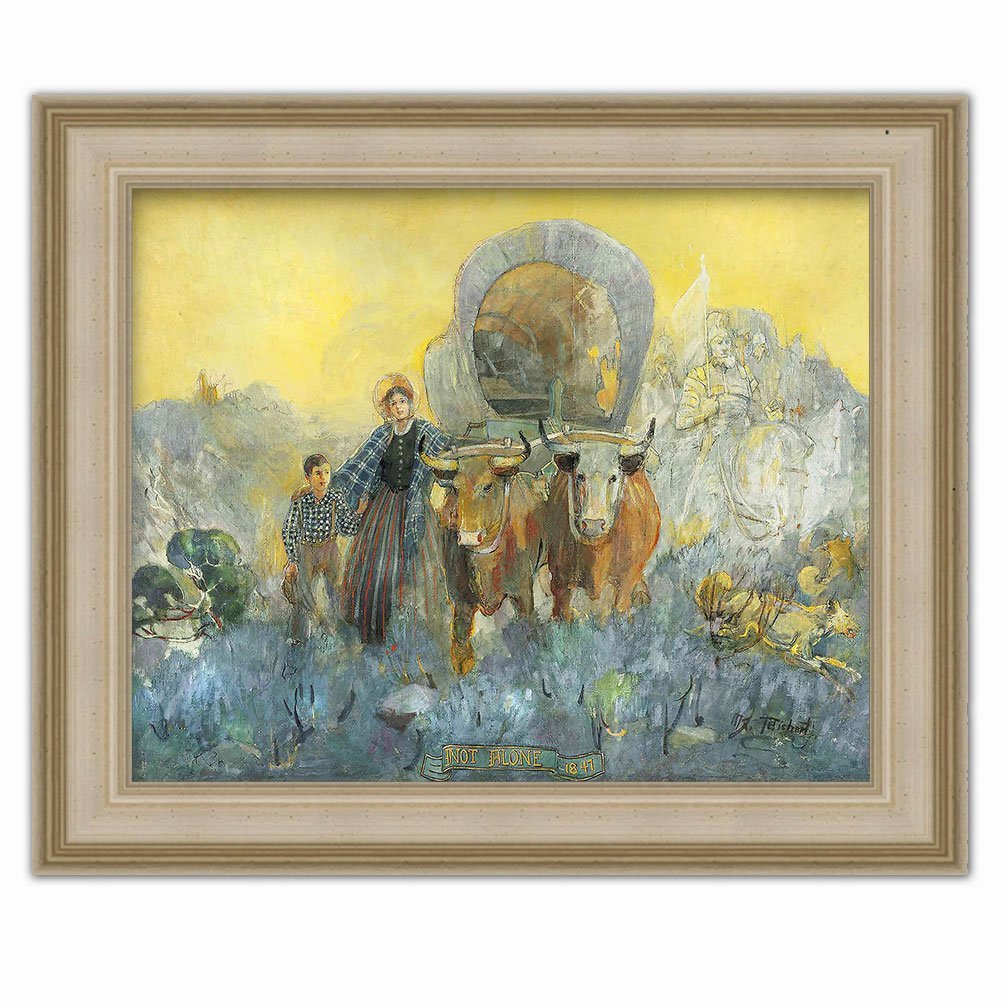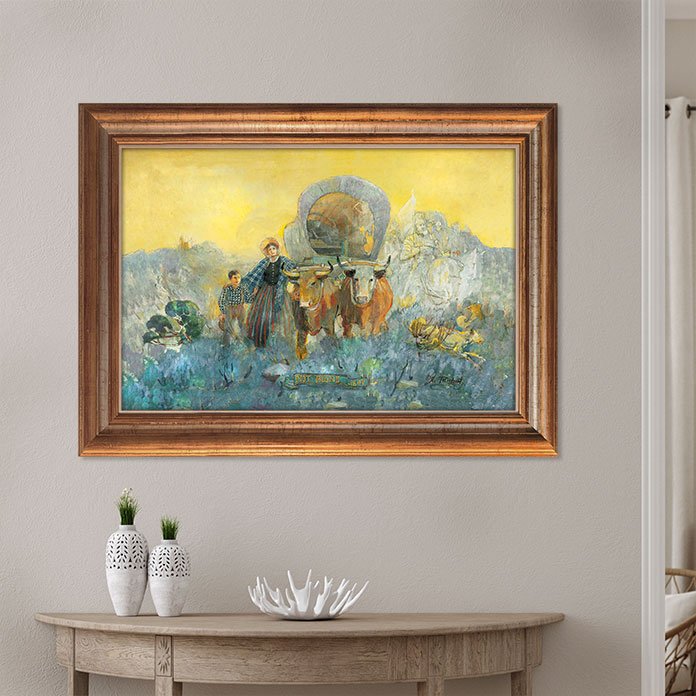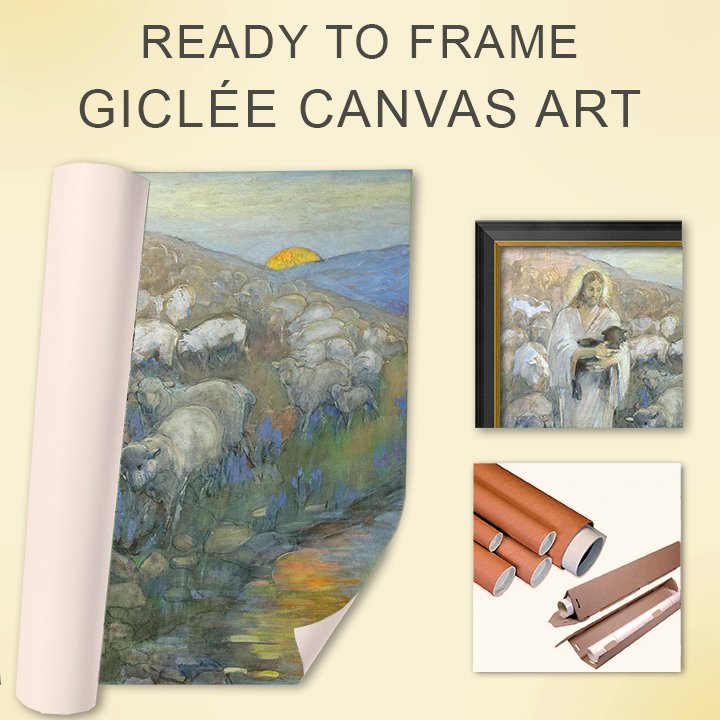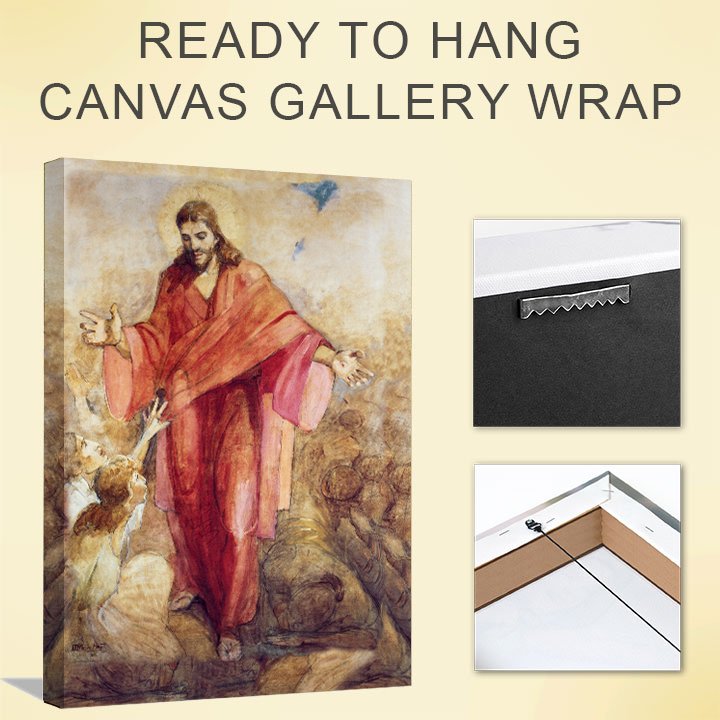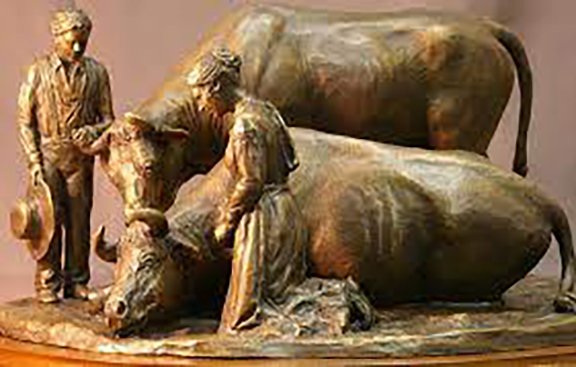Not Alone by Minerva Teichert (c. 1920)
Minerva Teichert is known for her beautiful telling of the story of the pioneers through paintings like this one. This depict the traveling Latter-day Saints in 1847 as they made their way to the Great Salt Lake valley.
More About Not Alone
During Teichert's studies at the Art Institute of Chicago and the Art Students League of New York, she became captivated by the educational potential of large murals in public buildings and their capacity to be seen by great numbers of people. It was while in New York that noted American realist painter Robert Henri challenged her to paint the "great Mormon story." This admonition led Teichert to paint many theatrical depictions of Mormon pioneers, the American West and Book of Mormon scenes. In 1920 her friend and fellow church member William Hyde wrote her a letter recommend to her a scene that depicted the courage and strength of the Mormon Pioneer women. In his letter he stated “The picture will show in one glance the heroism, and the faith of the Mormon women – and so also with that, the Mormon faith and spirit… The time is when she is left alone and sets her face amid the howling of the wolves and the fear of savages, to overtake the train in advance… her face set…with the look that does not see the intervening things – hers is the eye of faith. Who is the shadowy form, mounted on this classical charger that stands so distinct in character apart from those oxen, and is caparisoned for war? This is the captain of the Lord’s host. You see his sword, the poise of the head, the attitude of confidence as he rides unseen by the side of this Mormon saint.”She painted Not Alone in answer to that challenge. It’s from a famous pioneer story where Mary Fielding Smith, widow of Hyrum Smith, brother of the Church founder Jospeh Smith. Mary and her small son were traveling crossed the plains from Nauvoo, Illinois to the Great Salt Lake Valley. Mary and her son were managing her own wagon and team. Along the trek west her ox became sick, causing her delays. The most common version of the story is that Mary placed her hands on the ox and gave it a blessing, causing the ox to come back to health immediately. She and her son not only got back on the trail, but by evening she had passed the lead wagon.
More About Minerva Teichert
Minerva Teichert was an artist whose works ranged from western American subjects to many religious paintings primarily depicting the history of the Latter-day Saint movement. This includes Minerva’s several works requested by the Church that were used to illustrate the stories using Book of Mormon art. She is also well known for the many murals she painted in public and private buildings scattered throughout Wyoming, Idaho and Utah. She was born Minerva Kohlhepp in 1888 in North Ogden, Utah. Minerva was the second of ten children and spent most of the first half of her life doing just as much farm work as she did painting. She studied under famous artists like Robert Henri at the Art Institute of Chicago and Art Students League of New York. When she was 29 years old, Minerva Kohlhepp married Herman Teichert on September 15, 1917. However, only one year after their wedding, World War One broke out and Herman left for battle. Although Minerva traveled with Herman throughout his boot camp training and transfers, she was eventually forced to bid farewell and stayed at home with their newborn baby son. During the early years of their marriage, everything was in short supply because of the war, so Minerva Teichert would paint on scraps of wood and paper because there simply wasn’t enough money to buy art supplies. Fortunately, Herman returned home after the war and the couple went on to have four more children. Minerva and Herman spent most of their lives on a ranch in Cokeville, Wyoming. Much of Minerva Teichert art can also be found by searching for LDS art, LDS church pictures, and Mormon art; even though these are not official names of the Church of Jesus Christ of Latter-day Saints.

